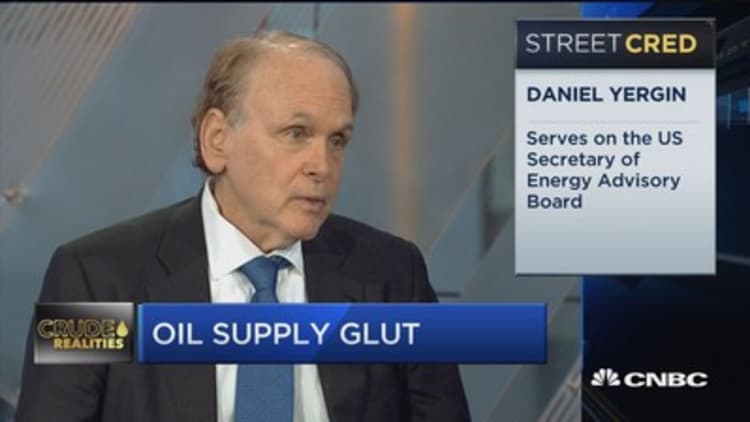
Oil prices dropped to six-week lows on Thursday, under pressure from high global inventories and doubts about OPEC's ability to implement agreed production cuts.
Brent crude oil hit a session low of $46.70 a barrel, its weakest since May 5 and just above six-month lows, before recovering a little ground to trade at $46.90, down 10 cents, by 2:36 p.m. ET (1836 GMT).
U.S. light crude fell to a six-week low of $44.32. It ended Thursday's session 27 cents lower at $44.46, the lowest settle since Nov. 14.
Both crude oil benchmarks have lost all the gains made at the end of last year after the Organization of the Petroleum Exporting Countries agreed with other big producers to cut output in an effort to prop up prices.

OPEC and its allies have promised to restrict output until at least the end of the first quarter of next year to try to drain surplus supply.
But inventories are near record highs in many parts of the world, and many traders expect further price falls.
"Oil prices are pinned near their lowest level in seven months," said Stephen Brennock, analyst at London brokerage PVM Oil Associates, adding that the market showed "little in the way of upside potential."
Crude prices have fallen about 13 percent since May 25, when OPEC agreed to extend its output limits into next year.
Despite the deal, some OPEC members, including Nigeria and Libya, have been exempt from cutting and their rising output is seen to be undermining efforts led by Saudi Arabia.
"OPEC 2017 year-to-date exports are only down by 0.3 million barrels per day (bpd) from the October 2016 baseline," analysts at AB Bernstein said.

OPEC's pledge was to cut some 1.2 million bpd, while other producers including Russia agreed to bring the total reduction to almost 1.8 million bpd.
But production in the United States, which is not part of the deal, has jumped 10 percent over the past year to 9.33 million bpd.
"Production growth in Libya and Nigeria and continued rig additions in the U.S. are complicating the picture, raising doubts on OPEC's strategy," AB Bernstein said.
The U.S. government's Energy Information Administration has raised its prediction for domestic output growth in 2017 to 460,000 bpd from a predicted decline of 80,000 bpd in December.
OPEC now expects U.S. production to increase by 800,000 bpd in 2017.
This suggests global oversupply will persist for a while.
The International Energy Agency says it expects oil supplies next year to outpace demand despite consumption hitting 100 million bpd for the first time.

